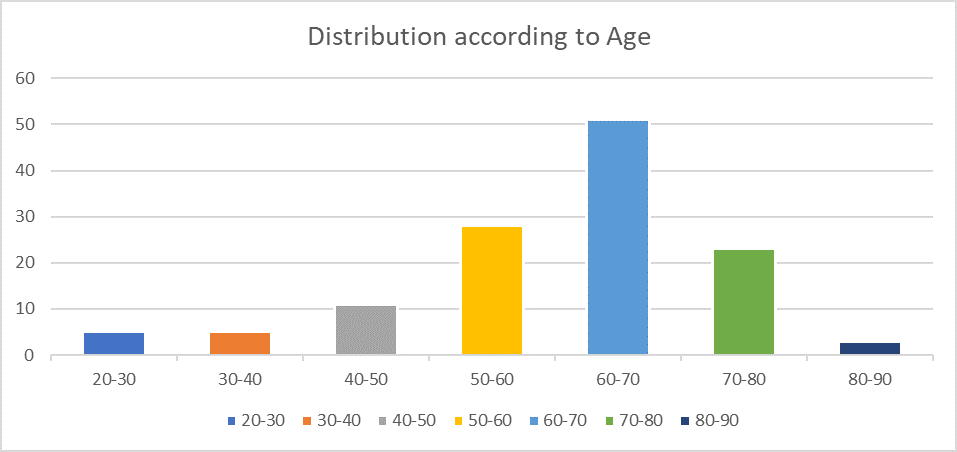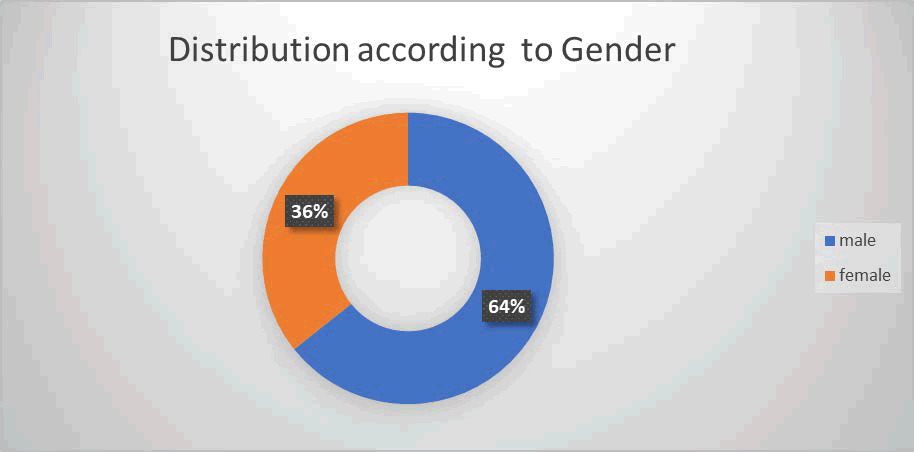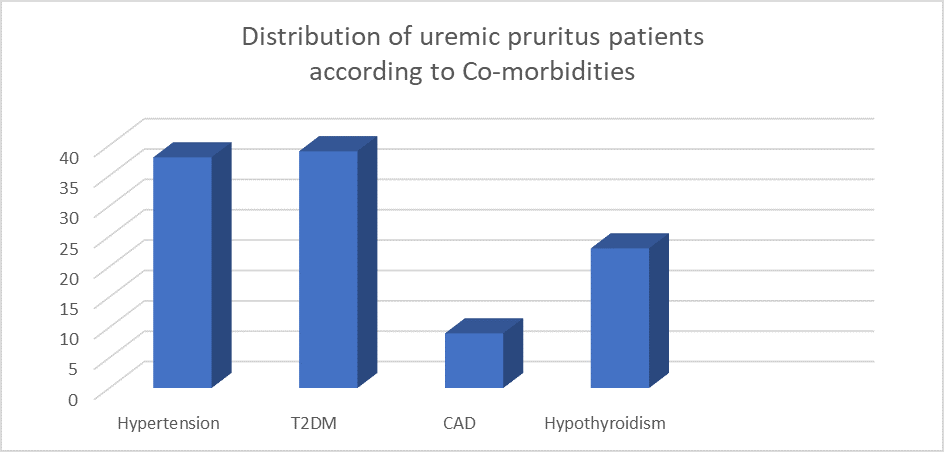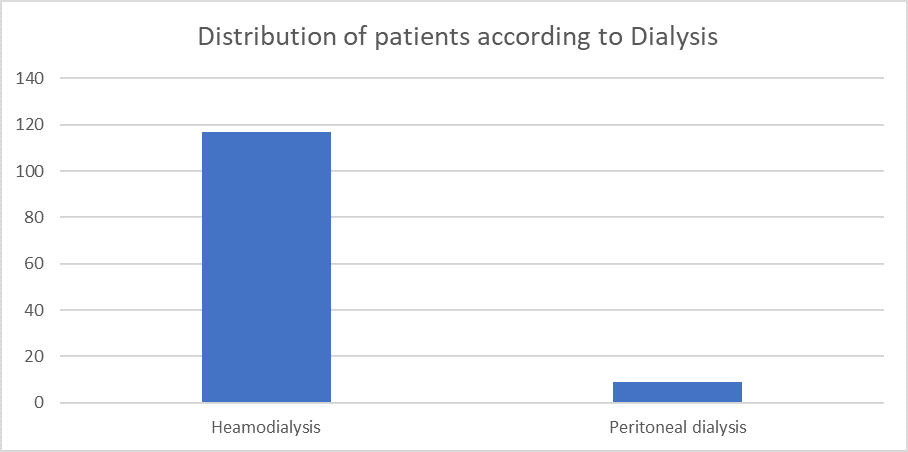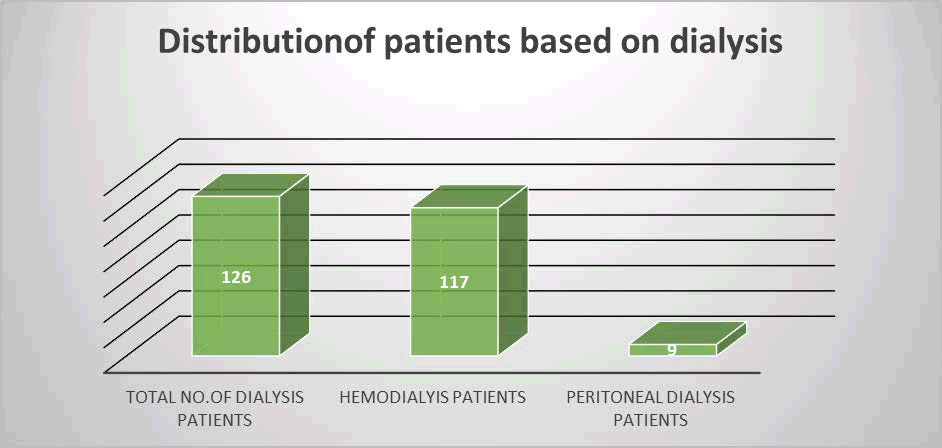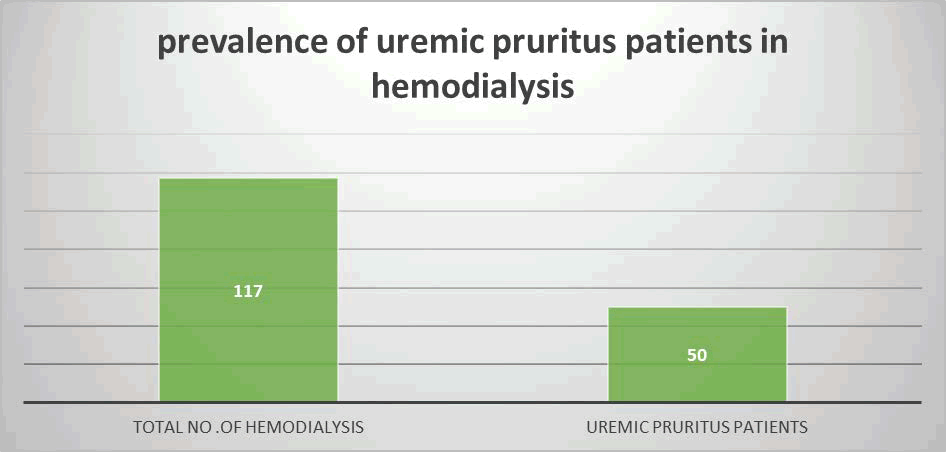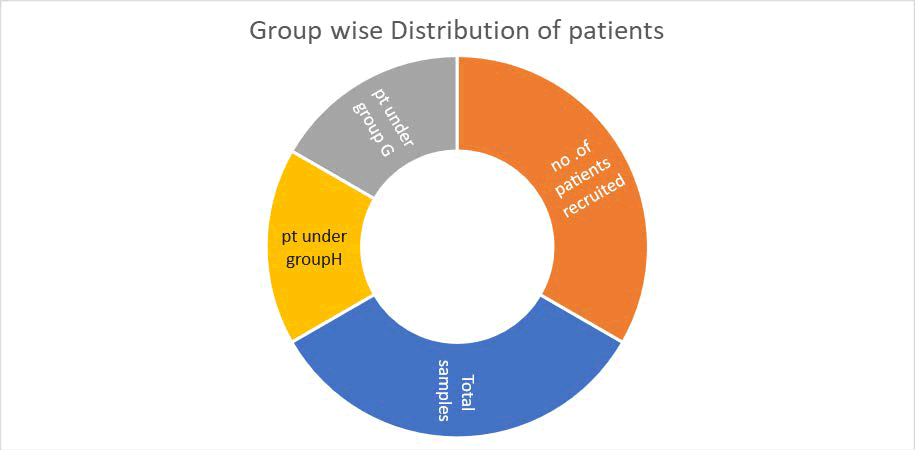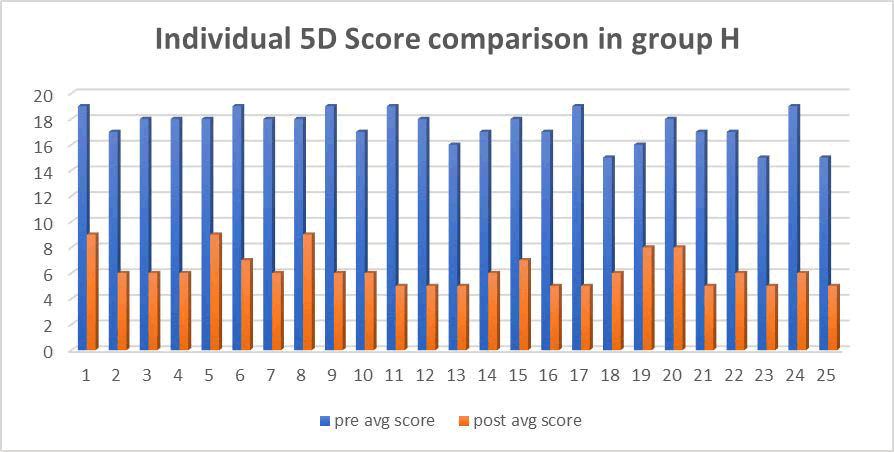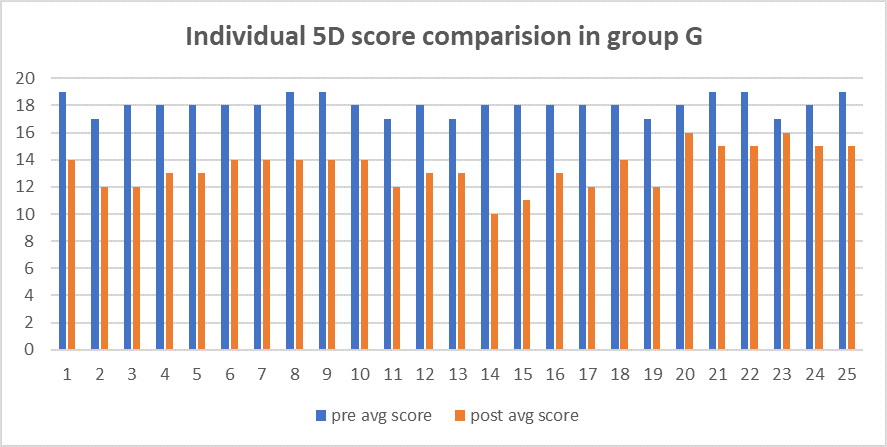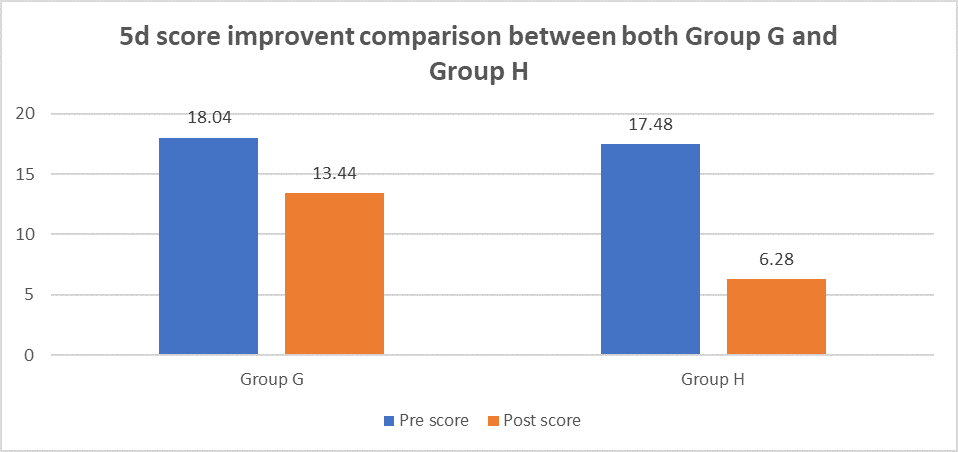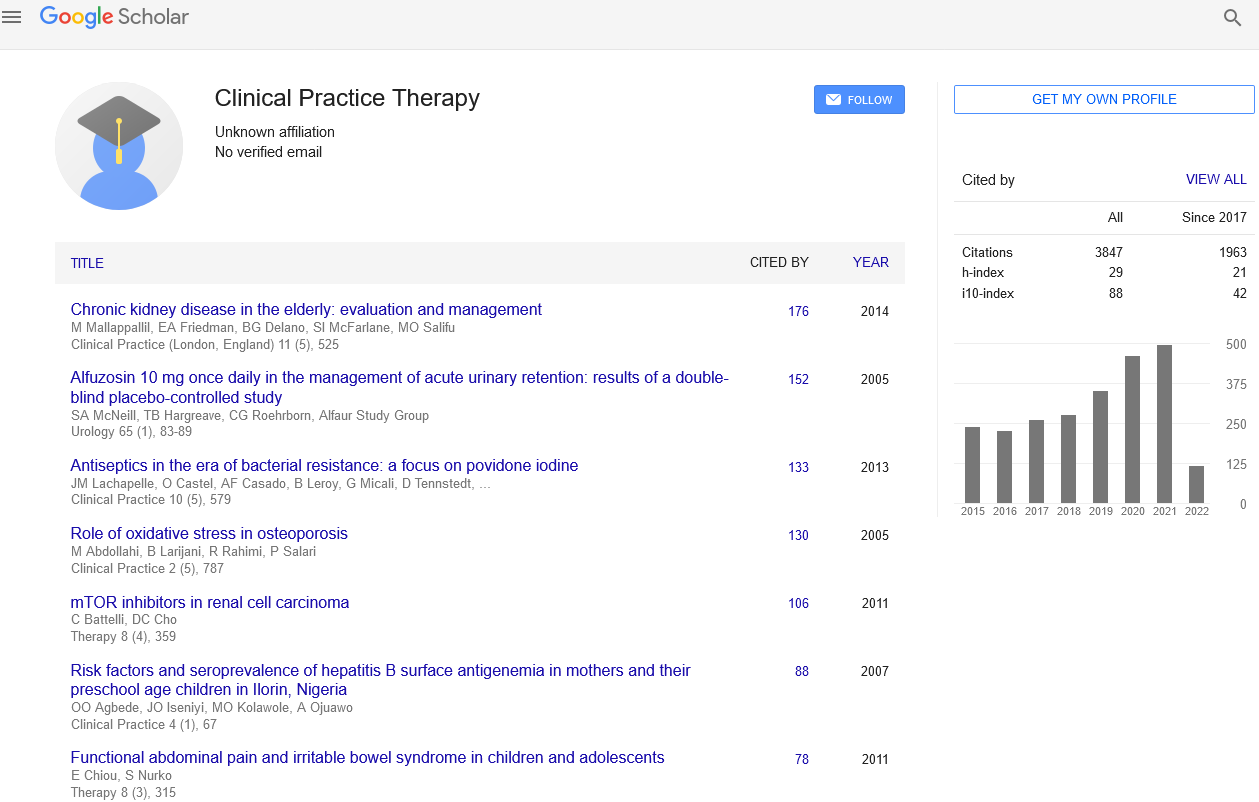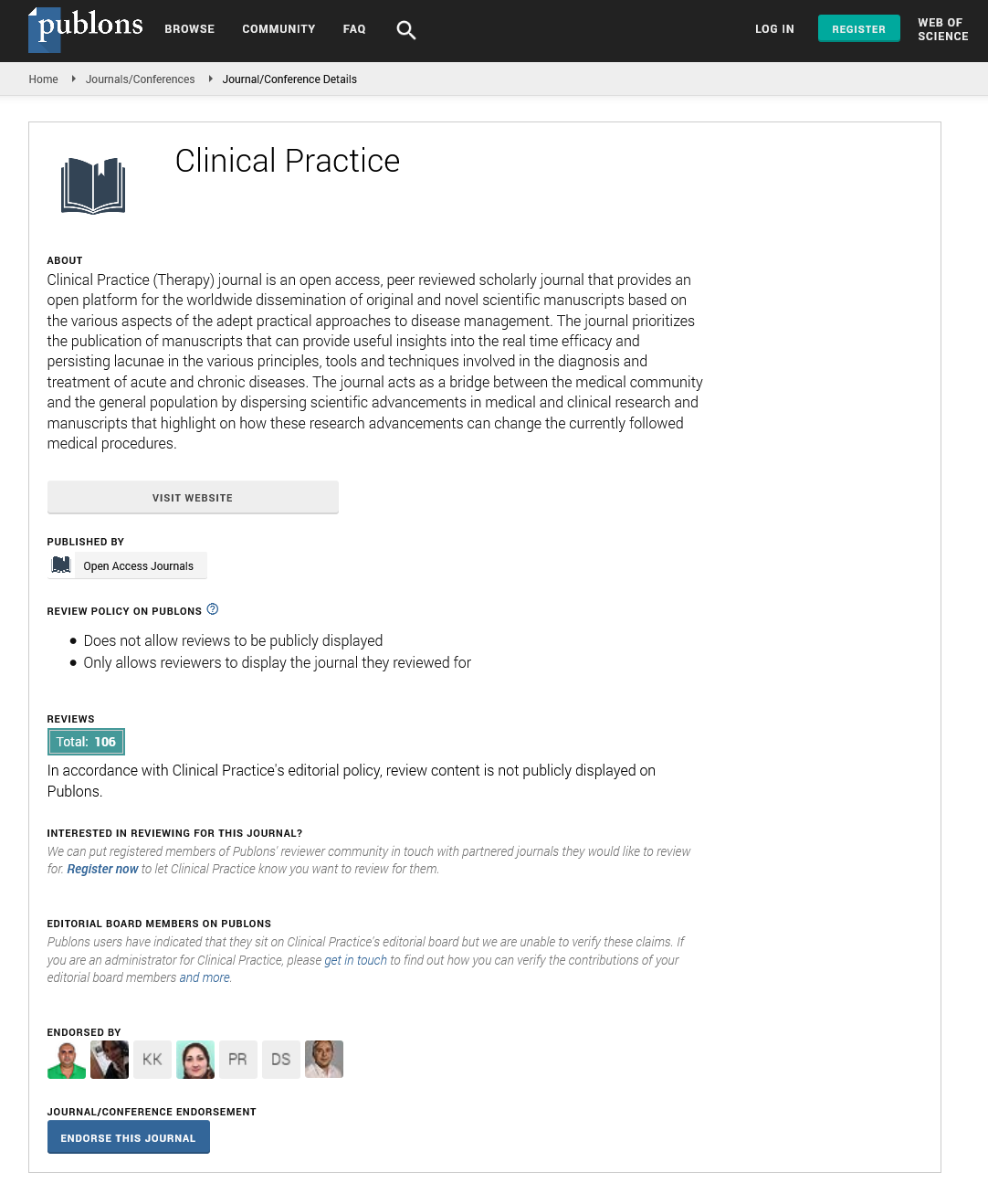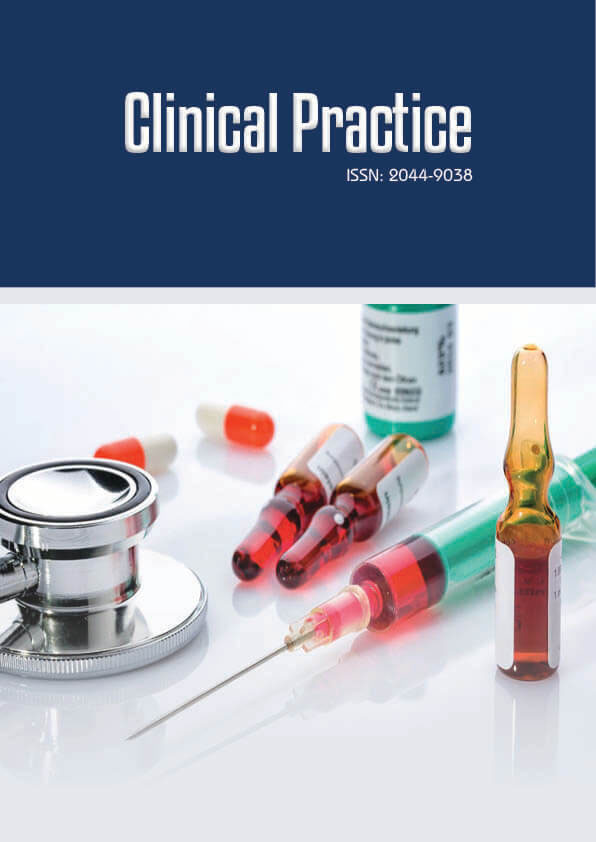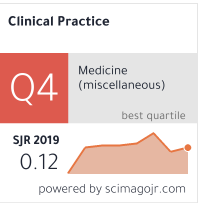Research Article - Clinical Practice (2025) Volume 22, Issue 1
A study on the safety and efficacy of gabapentin and anti-histamines on uremic pruritus in CKD patients
G Sainath, P Bhavana*, S Nithya, Thota Rachana
Department of Pharmacy, Guru Nanak Institutions Technical Campus, Ibrahimpatnam, India
- *Corresponding Author:
- P Bhavana
Department of Pharmacy, Guru Nanak Institutions Technical Campus, Ibrahimpatnam, India
E-mail: bhavanaabhi1234@gmail.com
Received: 01-Feb-2024, Manuscript No. FMIJCR-23-121055; Editor assigned: 05-Feb-2024, Pre-QC No. FMIJCR-23-121055 (PQ); Reviewed: 19-Feb-2024, QC No. FMIJCR-23-121055; Revised: 13-Mar-2025, Manuscript No. FMIJCR-23-121055 (R); Published: 20-Mar-2025, DOI: 10.37532/2044-9038.2025.22(1).1-6
Abstract
Pruritus is a common and distressing symptom in patients with Chronic Kidney Disease (CKD), particularly in end-stage renal disease patients. Uremic Pruritus (UP) has a major clinical impact, affecting the quality of life, sleep and mental health of patients. The aim of this study was to compare the safety and effectiveness of gabapentin and anti-histamine on uremic pruritus in CKD patients. The primary objective was to compare the safety and effectiveness of the two drugs, while the secondary objectives included assessing the incidence of uremic pruritus in patients undergoing haemodialysis and observing reasons for itching in CKD patients under dialysis. The prospective comparative study was conducted at a tertiary hospital in Hyderabad, Telangana, with a sample size of 50 adult CKD patients on maintenance dialysis and uremic pruritus. The patients were divided into two groups, with one group receiving gabapentin and the other receiving anti-histamines. The effectiveness of the drugs was assessed based on the 5-D pruritus scale before and after administration. The study found that 39.6% of dialysis patients suffered from uremic pruritus, with the majority being on haemodialysis. Antihistamines were found to be more effective in subsiding the symptoms of uremic pruritus compared to gabapentin, which caused drowsiness and had fewer positive outcomes. The study concluded that antihistamines were more effective than gabapentin in reducing the distressing symptoms of uremic pruritus in patients on dialysis, highlighting the potential for improved quality of life and mental health outcomes for CKD patients with UP.
Keywords
Pruritus, Uremic pruritus, Gabapentin, Anti-histamine, Haemodialysis, 5-D pruritus scale
Introduction
Pruritus is defined as an unpleasant sensation of the pores and skin that provokes the urge to scratch. It is another medical term for itching [1]. And it is one of the maximum common skin complaints in the aged. It can lead to disturbed sleep and anxiety, constant scratching to attain comfort can harm the skin excoriation and minimize its effectiveness as the main shielding barrier [2]. Different people can tolerate specific amounts of itching and everyone’s tolerance may vary due to pressure and emotions.
Uremic pruritus: Patients have named uremic pruritus a priority for CKD research since it is a prevalent and bothersome symptom impacting patients with advanced Chronic Kidney Disease (CKD). The best therapy for uremic pruritus is not characterized. Uremic pruritus, which affects up to 46% of haemodialysis patients, is a frequent and unpleasant sign of kidney failure.
Uremic pruritus is most widely defined as an itch that occurs on a daily or near-daily basis and covers vast bilaterally symmetrical surface regions. It does not have a dermatomal pattern, and there is no primary skin lesion associated with it [3].
Pathogenesis: Chronic itching’s pathogenesis is complicated and poorly understood. Pruritogens (itchproducing substances such as histamine, prostaglandins, cytokines, neuropeptides and proteases) are hypothesized to be secreted by keratinocytes, immune cells or adjacent neurons in the skin. Through G protein-coupled, Tolllike or interleukin receptors, these pruritogens an activate histamine dependent or independent primary afferent sensory neurons with cell bodies in the dorsal root and trigeminal ganglia. The itch signal is subsequently sent to secondary neurons in the dorsal horn of the spinal cord by these sensory neurons. Spinal interneurons then modify itching via certain neurotransmitters (e.g. naturalistic polypeptide [4].
Drugs
Gabapentin: Capsules: 100 mg, 300 mg and 400 mg.
Tablets: 600 mg and 800 mg.
For chronic pruritus, the initial dosing of 300 mg OD can be increased to 1200 mg three times per day.
It is structurally similar to GABA. It does not, however, bind to GABAA or GABAB receptors and does not appear to alter GABA production or absorption. High-affinity gabapentin binding sites have been identified throughout the brain; these sites correspond to the existence of voltage-gated calcium channels that particularly contain the alpha-2-delta-1 subunit. This channel appears to be positioned pre-synaptically and may influence the release of excitatory neurotransmitters involved in epileptogenic and nociception [5].
How gabapentin works in uremic pruritus
One of the most inconvenient cutaneous signs of severe renal failure is pruritus. Pregabalin, gabapentin, doxepin, and desloratadine are just a few of the medications that have been used to treat Uremic Pruritus (UP). Gabapentin, a GABAergic medication, is beneficial in the treatment of uremic pruritus. Doxepin, a strong antihistamine medication, is used orally or topically in numerous pruritic disorders such as UP, idiopathic pruritus, atopic dermatitis, neurogenic or psychogenic pruritus and in the therapy of UP in haemodialysis patients [6].
Anti-histamines
Primary generation: Hydroxyzine, diphenhydramine, promethazine.
Secondary generation: Fexofenadine, cetirizine, loratadine.
Dosage forms: Tablet: 30 mg, 60 mg, 180 mg oral disintegrating tablets: 30 mg.
The fundamental mechanism of antihistamine activity in the treatment of allergic illnesses is thought to be the competitive antagonism of histamine binding to cellular receptors (particularly, H1-receptors) found on nerve terminals, smooth muscle, and glandular cells. Histamines have a role in the inflammatory response and operate as a neurotransmitter (mediator of pruritus) Histamines are produced by basophils and are present in nearby tissues. Histamine increases the permeability of white blood cells, allowing pathogens to get more involved with affected tissues [7].
5-D Itch scale
Itching is a multifaceted and subjective feeling that is difficult to measure. Most itching assessment approaches are unidimensional, for example, merely assessing intensity without regard for the quality of life or only measuring scratching activity. None are capable of detecting change over time, which is required for them to be used as an outcome measure of response to an intervention. The 5-D itch scale was created as a short yet multidimensional questionnaire to be used as an outcome measure in treatment studies. Degree, duration, direction, impairment, and distribution are the five dimensions [8].
• In 2016 Eman Nofal, Fawzia Farag et al., conducted a randomized controlled study (trial). The objective of this study is to determine the effectiveness, recommend dose and safety of Gabapentin in haemodialysis patients. In this method, the patients are randomly classified into two equal groups. Gabapentin group: 27 patients received capsules starting with 100 mg and gradually increased the dose up to 300mg after each haemodialysis for one month. Placebo group: 27 patients received a placebo thrice weekly after each haemodialysis. The severity of pruritus was measured by the “5-D pruritus scale”. As a result, 88.9% of patients responded well to gabapentin versus 22.2% in the placebo group. Finally, the study concludes that uremic pruritus patients may benefit from Gabapentin as first-line therapy with a maintenance dose of 100-300 mg and also a 5-D scale to assess the severity of pruritus [9].
• In 2013 Saied Amir khan Lou, Anna Rastedi, et al., had conducted a double-blind randomized study. The objective of the study is to compare Gabapentin and Anti-histamines (Ketotifen) in the treatment of uremic pruritus in haemodialysis patients. The method includes a double-blind randomized clinical trial in 52 haemodialysis patients with uremic pruritus. Patients are divided into two groups G and K. In one 1 group G was treated with gabapentin capsules 100 mg daily for 2 weeks. In group, k patients were treated with antihistamines (Ketotifen) 1 mg twice daily for 2 weeks. Finally, they concluded that gabapentin and antihistamines (Ketotifen) significantly improve in haemodialysis patients with uremic pruritus and there is no difference observed between the two groups [10].
• No shad H, et al., had conducted a double-blind randomized clinical trial. The objective of this study is to compare gabapentin and antihistamine in the treatment of uremic pruritus and its psychogenic problems. The method includes 40 patients with uremic pruritus. They were randomized into two groups one group received gabapentin (100 mg) and the other group received antihistamine (Hydroxyzine 10 mg) for 4 weeks. Finally, they concluded that gabapentin is more effective than antihistamine in treating uremic pruritus and its psychogenic problems [11].
• Afsoon Emami Naini, Ali Amini Harandi, et al., conducted a study to evaluate the efficacy of gabapentin in controlling uremic itch. Methods include a double-blind, placebo-controlled trial, where a patient was administered either gabapentin (or) placebo twice weekly for 4 weeks. Finally, they concluded that gabapentin is Safe and effective treatment for uremic itch [12].
• Goksel Ozpalp, Ali Ihsan Gunal, et al., conducted a randomized, placebo-controlled, double-doubleblind. The objective of this study is to assess the effectiveness of gabapentin against renal itch. The methods include a randomized placebo-controlled, double-blind trial in which patients were randomly assigned to receive gabapentin for 4 weeks followed by a placebo for 4 weeks thrice weekly, at the end of hemodialysis sessions. Finally, they concluded that gabapentin safe and effective for treating uremic pruritus in hemodialysis [13].
• Effat Razeghi, et al., conducted a double-blind clinical trial. This study aimed to determine the effect of gabapentin on uremic pruritus. Gabapentin (100 mg) was administered for four weeks, after a washout week, they received the placebo. Finally, they concluded that gabapentin is an effective agent in the treatment of uremic pruritus.
Materials and Methods
Study site: The study is conducted in the department of nephrology at care tertiary hospital located at Banjara hills, road number 1, Hyderabad, Telangana.
Study approval: The study protocol will be submitted to the Institutional Ethical Committee for approval.
Study type: A prospective comparative study.
Study duration: 6 months.
Sample size: After reviewing the case records in the Nephrology department we concluded that the sample size of 50 is feasible for the study.
Study criteria
Inclusion criteria
• Adult patients on dialysis.
• CKD patients on maintenance dialysis.
• CKD patients with uremic pruritus.
Exclusion criteria
• Patients sent who are not willing to give consent.
• AKI patients on dialysis.
• CKD patients who are not on dialysis.
Methodology
• Receiving approval from the ethical committee, our study is divided into two groups.
• Group G and Group H Group G Patients are given gabapentin and Group H patients are given antihistamines.
• Pre and post-administration of drugs are calculated in study groups based on the 5-D pruritus scale.
• Pre-administration report is taken from patients reporting uraemic pruritus.
• According to the drug prescribed patients are distributed into their respective study groups that is group G and group H.
• Post administration report is taken from the patient after the drug administration.
• Both the study groups G and H observed/compare the effectiveness of the drug administered.
Results
Distribution of patients according to age
The study included 126 patients on dialysis to find out a patient who is suffering from uremic pruritus, this is the age-wise division of patients on dialysis. As the FIGURE 1 shows that 05 patients are under 20-30 age group, 5 patients are under 30-40 age group, 11 patients are under 40-50 age group, 28 patients are under 50-60 age group, 51 patients are under 60-70 age group, 23 are under 70- 80 age group and 03 patients are under 80-90. 60%-70% age group is highly affected in our study which is 47.5% of total patients 30-40 and 80-90 age groups are affected less which is 5% and 7%.
FIGURE 1. Distribution of patients according to age.
Distribution of patients according to gender
Among 126 patients 65% are male patients and 35% are female patients. Figure shows that male populations are more on dialysis when compared to female populations FIGURE 2.
FIGURE 2. Distribution of patients according to gender.
Distribution of patients according to comorbidities
As the FIGURE 3 shows a maximum of 39 patients are primarily affected with DM type-2, where 38 patients suffering from hypertension, 23 patients are having hypothyroidism,09 patients are affected with CAD, 09 patients are affected with MHD from our study DM is the most common comorbidity and CAD was least affected comorbidity.
Distribution of the patients according to the type of dialysis
117 patients were on hemodialysis whereas only 09 patients were on peritoneal dialysis.
FIGURE 3. Distribution of patients according to co-morbidities.
As the FIGURE 4 shows that out of 126 patients 117 majorities of the patients are under hemodialysis when compared to peritoneal dialysis there were only 09 patients out of 126 patients.
FIGURE 4. Distribution of the patients according to the type of dialysis.
Distribution of patients based on dialysis
A total of 126 patients are under dialysis which 117 patients are undergoing haemodialysis, and 09 patients are undergoing peritoneal dialysis (FIGURE 5).
FIGURE 5. Distribution of patients based on dialysis.
Prevalence of uremic pruritus patients in haemodialysis
The total no. of patients on hemodialysis is 117 of which 50 patients are suffering from Uremic Pruritus almost 42.7% of people are with uremic pruritus only (FIGURE 6).
FIGURE 6. Prevalence of uremic pruritus patients in hemodialysis.
Incidence of uremic pruritus in dialysis patients
Total no. of dialysis patients: 126
Patient with uremic pruritus: 50
126 patients are on dialysis out of which 50 patients are suffering from uremic pruritus. That is almost 39.6% of patients who are on dialysis are suffering from uremic pruritus.
Group wise distribution of patients for the study
50 patients are taken in our study, in which 25 patients are kept under group G which means patients under group G receive gabapentin. The remaining 25 patients are considered under group H which means patients under group H receive antihistamines (FIGURE 7).
FIGURE 7. Group wise distribution of patients.
Pre and post-administration analysis under group H
The FIGURE 8 shows the pre and posts an administrative analysis of antihistamines to know the efficacy of the drug.
FIGURE 8. Pre and post-administration analysis under group H.
Efficacy is understood based on an individual 5D score which includes 5 aspects such as degree, direction, disability, distribution and duration of pruritus. Pre and post-administration analysis show drastic changes which means the drug is suitable for uremic pruritus.
Pre and post-administration analysis under group G
The FIGURE 9 shows the pre and posts an administrative analysis of gabapentin to know the efficacy of the drug.
FIGURE 9. Pre and post-administration analysis under group G.
Efficacy is understood based on an individual 5D score which includes 5 aspects such as degree, direction, disability, distribution and duration of pruritus. Pre and post-administration analysis show fewer changes only which means the drug is not reducing or distressing symptoms of uremic itch.
5-D Score comparison between both group G and group H
Based on the individualized 5D score the preadministration score of gabapentin is 18.04 and the post-administration score is 13.44. There is no greater difference between the pre and post-score administrative reports of gabapentin (FIGURE 10). Antihistamine pre administrative score is 17.48 and post administrative score is 6.28. It is evidence showing the drastic changes in the pre and post administrative scores. So, it is a better choice for patients on dialysis suffering from uremic pruritus.
Figure 10. 5-D score comparison between both group G and group H.
Discussion
Two drugs were included in our study viz., gabapentin and antihistamines to know the safety and efficacy in patients suffering from uremic pruritus on dialysis with CKD stage 5. A total of 50 patients were included in our study. The patients were divided into two groups which are group G and group H. Patients in group G received gabapentin and patients in group H received antihistamines. This study was conducted for 6 months. In this study period using the standard 5D Itch scale, it is observed that the severity of the pruritus in patients who received gabapentin is unchanged or less effective. Whereas patients who received antihistamines in this study period there is decreased severity and symptoms are subsided. And also, patients who received gabapentin have drowsiness and have side effects.
In our study, it was observed that 126 patients on dialysis of which 50 patients are suffering from uremic pruritus which means 39.6% of people are suffering from uremic pruritus. Uremic pruritus was most commonly seen in patients on hemodialysis. Almost of the patients on dialysis are suffering from uremic pruritus. Pruritus has a major clinical impact on patient quality of life which leads to impaired sleep, depression, increased mortality and increases suicidal tendencies in the people. By using antihistamines, we can reduce the distressing symptoms of itch in patients. Pre administrative score of gabapentin is 18.04 and post administrative score is 13.44. When it comes to antihistamines pre administrative score is 17.48 and post administrative score is 6.28. So out of 50 patients who received Antihistamines shows positive outcomes and also based on pre and post administrative analysis there is drastic change of symptoms in patients receiving antihistamines.
Conclusion
The study was conducted on comparison of gabapentin (100 mg) and antihistamine on 50 patients in which gabapentin was given to 25 patients and antihistamine was given to 25 patients with uremic pruritus on dialysis. So based on the severity scoring of the 5D-itch scale, gabapentin is causing more side effects and patients are not willing to take it due to its side effects and drowsiness. And there are no subsided symptoms of uremic pruritus whereas antihistamines subsided the symptoms of uremic pruritus in patients on dialysis. So, we concluded that antihistamine is more effective than compared to gabapentin.
Future scope
Our research showed that a number of crucial topics were addressed and there is still a great deal of possibilities for expansion. Patients are experiencing more side effects from the drug gabapentin than from the anti-histamine. In order to lessen the patient’s symptoms, we can also prescribe other anti-histamine drugs. It will also be very helpful in the development of new drugs since it will improve patient outcomes and lower adverse effects.
References
- Yosipovitch G, Bernhard JD. Chronic pruritus. N Engl J Med. 368, 1625-34 (2013).
- Miller-Keane. Encyclopaedia and dictionary of medicine, and allied health, Seventh Edition. (2003).
- Simonsen E, Komenda P, Lerner B, et al. Treatment of uremic pruritus: A systematic review. Am J Kidney Dis. 70, 638–55 (2017).
[Crossref] [Google Scholar] [PubMed]
- Keith-Reddy SR, Patel TV, Armstrong AW, et al. Uremic pruritus. Kidney Int. 72, 373–7 (2007).
- MD JB. Comparison of gabapentin with doxepin in the management of uremic pruritus: Pilot study. (2018).
- Gabapentin-uses, dosage, side effects, price, composition list of common antihistamines+uses and side effects. (2022).
- Elman S, Hynan LS, Gabriel V, et al. The 5âD itch scale: A new measure of pruritus. Br J Dermatol. 162, 587-93 (2010).
[Crossref] [Google Scholar] [PubMed]
- Nofal E, Farag F, Nofal A, et al. Gabapentin: A promising therapy for uremic pruritus in hemodialysis patients: A randomized-controlled trial and review of literature. J Dermatol Treat. 27, 515-9 (2016).
[Google Scholar] [PubMed]
- Amirkhanlou S, Rashedi A, Taherian J, et al. Comparison of gabapentin and ketotifen in treatment of uremic pruritus in hemodialysis patients. Pak J Med Sci. 32, 22 (2016).
[Crossref] [Google Scholar] [PubMed]
- Noshad H. Comparision of gabapentin and antihistamines in treatment of uremic pruritus and its psychological problems. 5, 27-8 (2011).
- Naini AE, Harandi AA, Khanbabapour S, et al. Gabapentin: A promising drug for the treatment of uremic pruritus. Saudi J Kidney Dis Transpl. 18, 378-81 (2007).
[Google Scholar] [PubMed]
- Gunal AI, Ozalp G, Yoldas TK, et al. Gabapentin therapy for pruritus in haemodialysis patients: A randomized, placebo-controlled, double-blind trial. Nephrol Dial Transplant. 19, 3137-9 (2004).
[Crossref] [Google Scholar] [PubMed]
- Razeghi E, Eskandari D, Ganji MR, et al. Gabapentin and uremic pruritus in hemodialysis patients. Ren Fail. 31, 85-90 (2009).
[Crossref] [Google Scholar] [PubMed]
